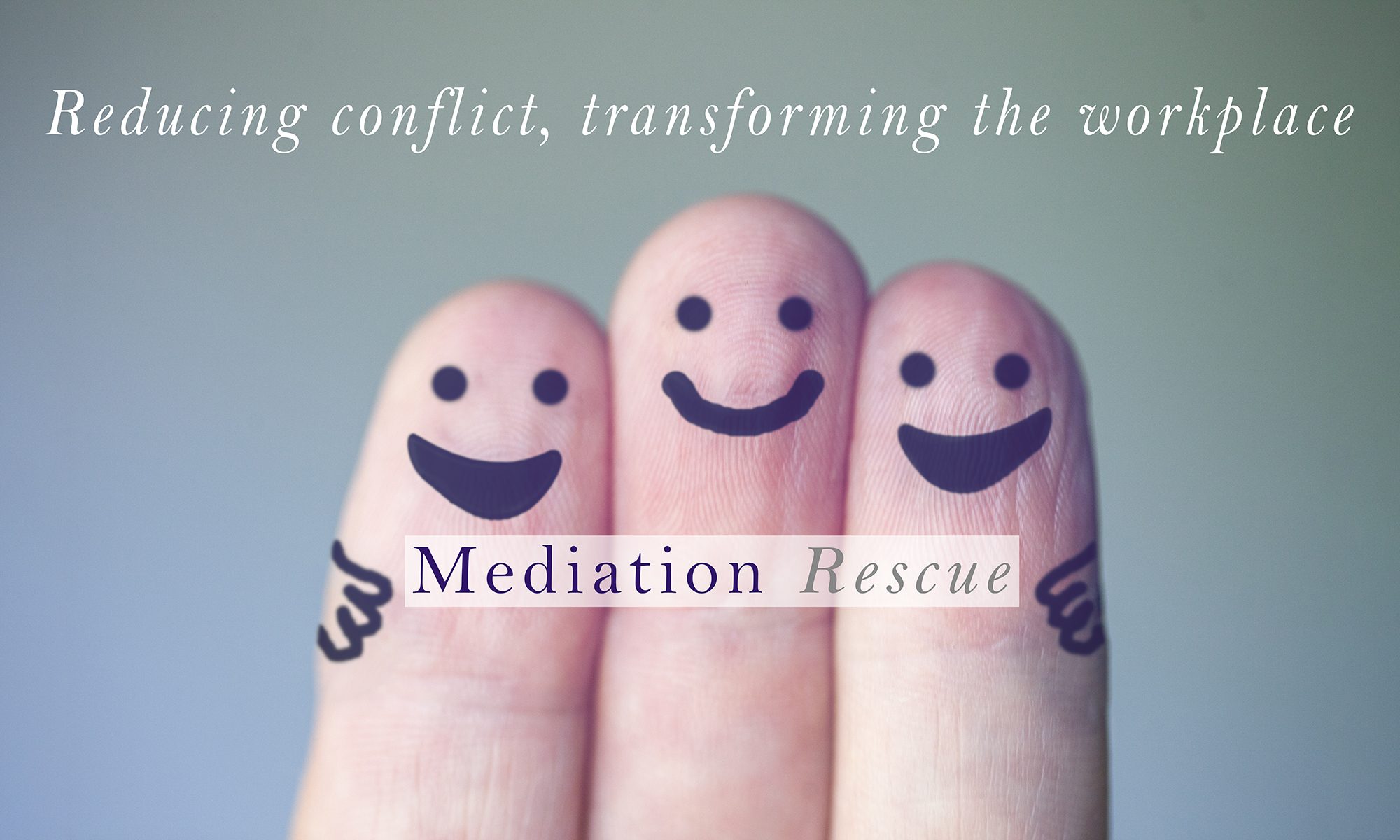Staff turnover, absenteeism, loss of good people, time spent on people problems: dealing with staff issues frustrates most managers and is a major cost to any business. One of the main causes of disruption in the
work is conflict – between employees, between business partners, between managers and staff. A recent survey by the Chartered Institute of Personnel and Development (CIPD) revealed that 72% of HR managers said that employees contact them to resolve a workplace conflict and 72% to raise a grievance. (People Management January 2016 p.37)
Formal grievance and disciplinary procedures promote fair treatment and provide a useful framework for dealing with some types of complaints and bad behaviour, but they are inadequate on their own. They fail to nip problems in the bud. Their formality and the perception that they are about attributing blame and punishment can exacerbate the problem rather than solve it and make working together afterwards more difficult.
What’s the Business Case for Mediation?
A good conflict audit will dig out the actual costs to the business and then go further – nailing the chronic causes of conflict and securing solutions. Typically you can start with the 20% of management time spent dealing with conflict at work. Add a figure for the 22% of staff who work unproductively as a result of conflict and then for the 50% of people who take long-term sickness for the same reason. Now factor in recruitment, cover and training costs for the 12% turnover caused each year by unresolved conflict. Lastly, add the full cost of claims settled. That’s a
big enough figure to attract the attention of the most hard-nosed board member.
This is where Mediation Rescue can help. The audit will dig out the actual costs to the business and then go further – nailing the chronic causes of conflict over time and securing solutions. Conflict Resolution is really about difficult problem solving. It addresses individual situations, but it also tackles the systemic causes of conflict. It targets where disputes have most impact and leads to changes in ingrained behaviour.
The CIPD survey, Getting Under the Skin of Conflict, 2016, identifies that 38% of employees experienced conflict in the last year, but this could it be an underestimate if people do not recognise it as, for example, bullying or harassment, because they don’t categorise this behaviour in the same way as lawyers or HR professionals.
The role of the manager is key in addressing workplace conflicts. Many managers avoid dealing with conflict. ACAS’s analysis of bullying in the workplace (2015) revealed that complaints are often dismissed as personality clashes or problems with management style and managers often lack the confidence or skills to deal with it. The use of formal procedures can exacerbate the problem rather than solve it. Bringing people together for mediation or a facilitated conversation can be
powerful.
So what is best practice?
Workplace mediation is being increasingly used as an effective tool with a 90% success rate. This involves a direct intervention either by a skilled manager or using an experienced external mediator. Mediation can resolve problems quickly without recourse to time consuming formal procedures and encourages a collaborative and supportive culture. While the merits of formal procedures should not be overlooked, their outcomes are based on the intervention and judgement of a senior manager. Mediation enables those in dispute to resolve the problem themselves and is therefore more likely to result in an amicable closure and an agreed and sustainable strategy for getting everyone back to work.
Mediation and grievance and disciplinary procedures should be used in conjunction with each other. This sometimes occurs in an informal way, but good practice would be to apply it as a regular policy, providing different options to suit different situations. Employers could review their
employee relations practice. The aim is to provide sustainable solutions which means developing managers’ communications skills, providing support services to managers and helping implement effective long-term employee relations strategies to improve staff retention and improve morale.
